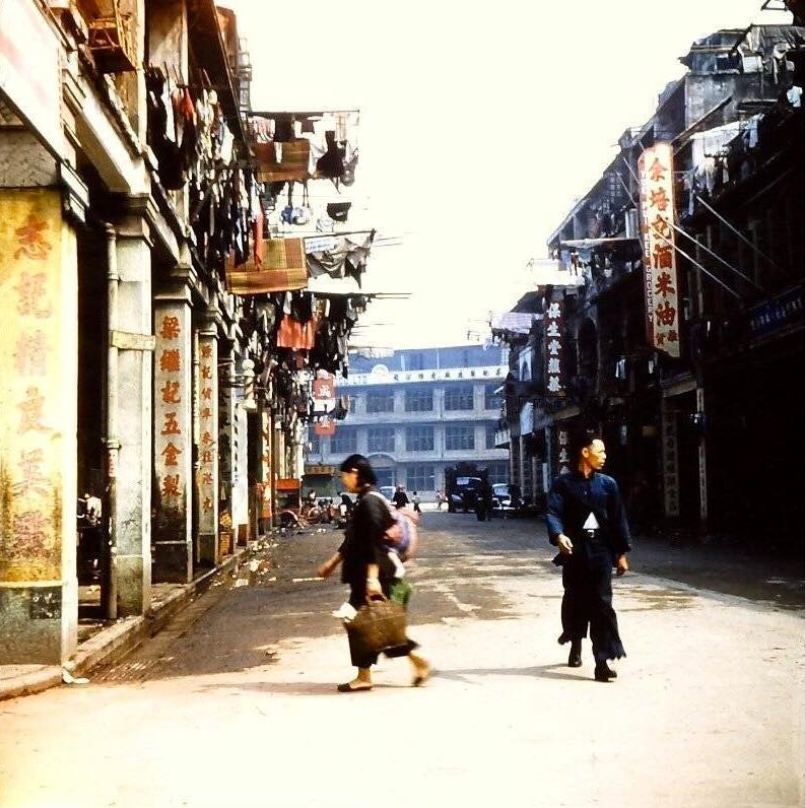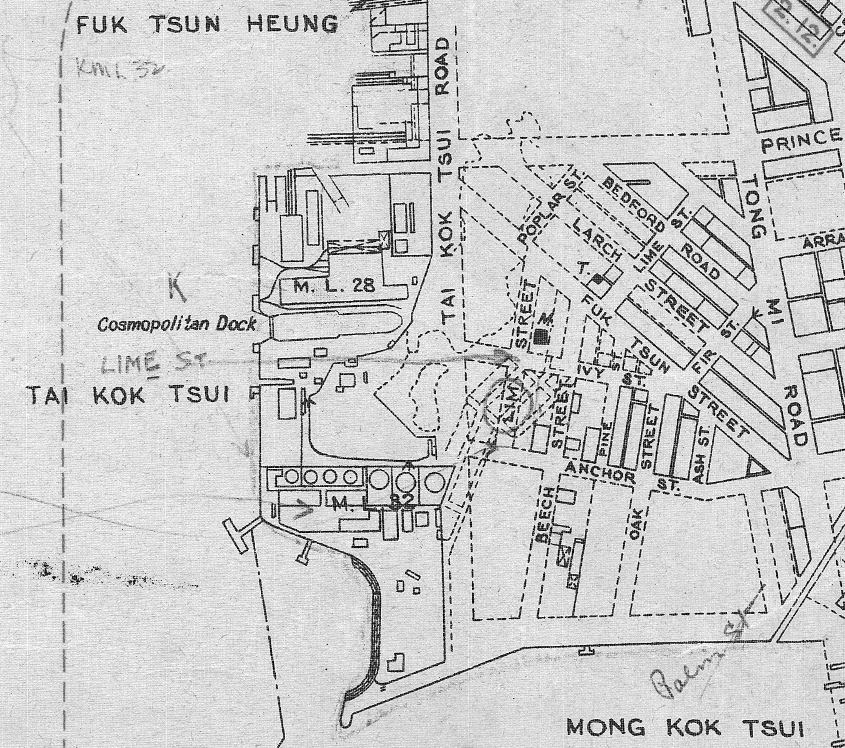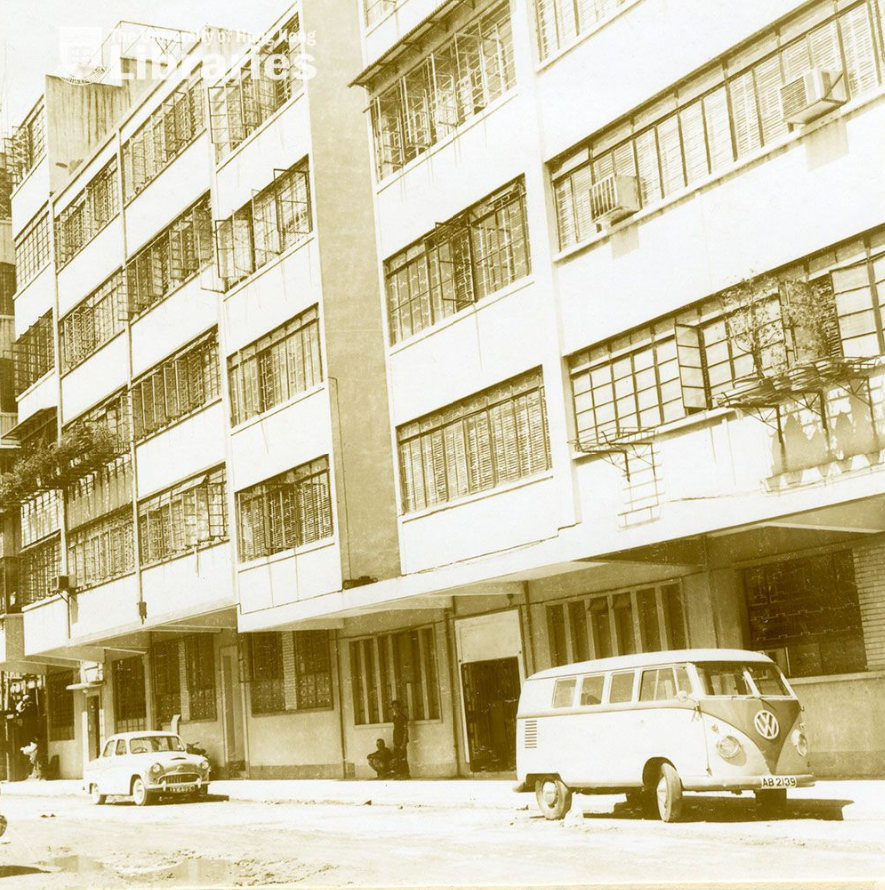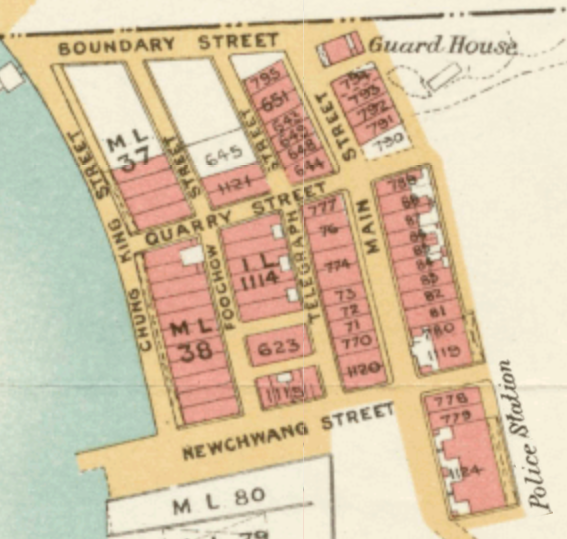Centennial tree street name
The first street of temperate trees—Ivy Street?
After the government began to develop the dock industry in Tai Kok Tsui, in order to further open up more industrial land, it carried out the first generation of land reclamation and land formation projects along the coast of Tai Kok Tsui in the early 1880s. At that time, British officials named the street after a creeping plant near the seaside. The plant was ivy, so it was logical to name the shore street Ivy Street. Perhaps the translator's ability at that time was limited and he could only transliterate the Chinese street name, so the Chinese name was Ai (I) Hua (vy) Street, which was once called Ivy Street. During the same period, there were also transliterated streets named Anchor Street and Yan (An) Jia (chor) Street, named after the shipping anchor. Around 1905, a street was opened through Epworth Street and Yanjia Street. It was also named after the temperate trees and was named Oak Street. It can be seen that Shiye's translation ability has increased and he has begun to use free translation naming.

Wulong Songshan Street
The government subsequently opened up Pine Street, but at that time, the free translation ability was still limited, and the cedar was misinterpreted as Pine (Pine should be pine). Songshu Street, which was opened about thirty years later, can only be translated as Fir Street (Fir should be fir tree), resulting in a situation where the Chinese and English words "Songshu" and "Songshu" are interchangeable, and they are still interchanged today.
Until the early 1900s, the main named streets in Tai Kok Tsui were Ava Street, Oak Street, and Fir Street, as well as shipping-themed Yanjia Street, Ship Lane, Junk Street, and Zuoshi Street. Joss Street, Suidter Street/Shu Tak Street and Kramer Street. Among them, only Ava Street, Cedar Street and Yanjia Street still exist today, but they have been rerouted many times and have no longer returned to their original state.
Develop commercial and residential complex areas
In 1920, Mong Kok Tsui was reclaimed to build Pine Street and part of Pine Street. In 1928, it was gazetted to cut off Oak Street and Cedar Street to the north of Fu Chun Street and Ship Street between Oak Street and Beech Street. This area later became part of Bodhi Street and Pine Street. By 1934, aerial photos showed that commercial and residential complexes had been built on the above two streets and Pine Street. Around 1915, due to the completion of the Yau Ma Tei Typhoon Shelter, the coastline was pushed forward from Yanjia Street to Cherry Street. Cherry Street was always labeled as "Wayside". It was not until 1958 that it was officially named Cherry Street and developed together with the name Palm Street. At the end of the 20th century, as the West Kowloon reclamation project turned the seaside Cherry Street inland, the corner topography of Tai Kok Tsui disappeared.
Around 1945, the commercial and residential complex in Tai Kok Tsui had been completely developed and planned in a well-shaped layout. Most of the street names were gazetted in 1927 to indicate the future street planning of Tai Kok Tsui, and continued to be named after plants, including Ash Street, Oak Street, Cedar Street, and Beech Street (Beech Street, which was once Known as Beech Street, Elm Street, Fir Street, Lime Street, Poplar Street, Larch Street, and Maple Street. The plan is similar to the current one. In 1951, Poplar Street was cut in half to accommodate the development of a poetry and dance area, and the remaining section of Poplar Street in Tai Kok Tsui was renamed Walnut Street.

Flowering figs
Starting from the mid-1940s, plans began to rebuild the mission house and the nearby wooden house area, which was originally located at the junction of Tong Chow Street and Tai Kok Tsui Road (now Leung Yin House). Since 1951, it has become Sycamore Street, Willow Street and part of Maple Street, and it was not fully planned until 1958. The original meaning of Sycamore should be fig tree, but if it is transliterated into poetry and dance, it is inferred that it is bad luck because it has no flowers or fruits. The district has successively built Lady Grantham New Village, Civil Service Co-operative Properties, and school villages (Sham Pui Chinese and English Kindergarten, Shiwu Street Government Primary School, Fresh Fish Hang School, Kowloon Sam Yuk Secondary School Chow Branch, St. Francis of Assisi College, etc.) . Poetry and Dance Street finally blossomed and bore fruit.

the last street of trees
Tieshu Street was opened in 1978 for the development of Fuduolai New Village Community. Looking at the 1976 building plans of Fu Duo Lai New Village, the location of Tie Shu Street is still marked as New Road. According to information from the Urban Council in 1980, when naming Tieshu Street, it was suggested to translate it into Dracaena Street. However, perhaps due to pronunciation and English proficiency, the English free translation was not adopted in the end, and the transliteration was used together with other new roads. Tieshu Street was finally renamed in 1981. Featured in the yearbook.
I don’t know if I tell you—Fu Quanluo 160 years ago
In 1860, the Ching government signed the Treaty of Beijing with the United Kingdom, ceding the south of Boundary Street in Kowloon to the United Kingdom and incorporating it into British Hong Kong. At that time, the terrain of Tai Kok Tsui was the corner of the bay. According to the map of the Treaty of Beijing in 1860, the corner-shaped bay on the left south of Boundary Street was Tai Kok Tsui. It can be seen that Tai Kok Tsui was noticed as early as 160 years ago. At that time, Tai Kok Tsui was a settlement of local fishermen and farmers, and there was a township named Fuk Chuen Yau. Although Fuk Ts'un Heung already existed when the port was opened, the British government announced in the Government Newspaper in 1892 that the village of Sham Shui Po in the south of the border was officially renamed Fuk Ts'un Heung (Fuk Ts'un Heung). Because it is close to the border and has bay fields, Fuchuan has long been a port for freight and trade, and a customs wharf was even set up in the 19th century. At that time, the three main streets in Fuk Chuen Township were High Street, Praya and Station Street. In 1909, when the government reorganized the Kowloon Peninsula, they were renamed Newchwang Street in the gazette. Street), Chungking Street and Foochow Street. Due to its proximity to the border, public security issues, and the long-term state of neglect, pornography, gambling, and drugs are prevalent throughout the area. Therefore, the three streets in Fuquan County are also known as the "Three Poor Alleys." Starting from about 1926, together with the Sham Shui Po reclamation project, San Bo Lane was gradually included in parts of Tung Chow Street, Tai Kok Tsui Road and the extension of Boundary Street, and the remaining old streets were named Fuk Tsun Street. ) to bless the whole township.

The Chinese and English names of the streets in the article (in English order):

Like my work? Don't forget to support and clap, let me know that you are with me on the road of creation. Keep this enthusiasm together!

- Author
- More